Aquidictyomyces W. Dong, H. Zhang & K.D. Hyde, gen. nov.
Index Fungorum number: IF558082; Facesoffungi number: FoF 09567
Etymology: – in reference to aquatic habitat where the fungus was collected and dictyoseptate conidia
Saprobic on submerged wood in freshwater.
Sexual morph: Undetermined.
Asexual morph: Hyphomycetous. Colonies superficial, effuse, gregarious, hairy, pale brown. Mycelium mostly immersed, composed of septate, branched, pale brown, thin-walled hyphae. Conidiophores macronematous, mononematous, erect, cylindrical, straight or slightly flexuous, septate, robust at the base, unbranched, brown, paler at the apex, smooth. Conidiogenous cells holoblastic, monoblastic, integrated, determinate, terminal, subcylindrical, pale brown, smooth. Conidia acrogenous, solitary, dry, thin-walled, smooth-walled, ginger-shaped, pale brown, dictyoseptate, constricted at septa, with one primary central, longitudinal septa, with transverse or oblique septa, with some protuberances at the apex, rounded or truncate at the base, with two tapering arms curving upwards at two sides, attached fibroid, hyaline appendages.
Type species: – Aquidictyomyces appendiculatus W. Dong, H. Zhang & K.D. Hyde
Notes: – Based on a blastn search of NCBIs GenBank, the closest hits using LSU sequence of Aquidictyomyces appendiculatus are some annulatascaceae-like genera in Diaporthomycetidae, viz. Barbatosphaeria (92.97%), Bullimyces (93.32%), Ceratolenta (93.10%) and Conlarium (92.99%). However, they can be easily distinguished by conidial shape. Our phylogenetic analysis shows that A. appendiculatus forms a distinct lineage in Diaporthomycetidae and has a weak relationship with Trichosphaeriaceae (Fig. 1). Morphologically, A. appendiculatus does not fit with the familial concept of Trichosphaeriaceae and any of other families in Diaporthomycetidae (Hyde et al. 2020).
We therefore place A. appendiculatus in a new genus Aquidictyomyces, and refer it to Diaporthomycetidae genera incertae sedis.
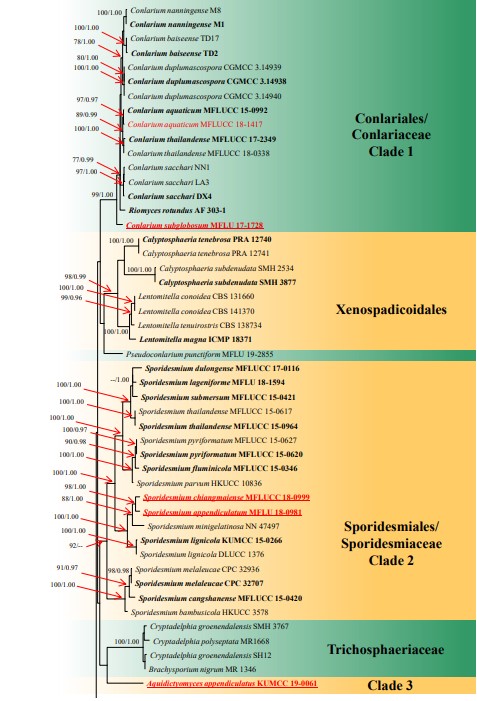
Figure 1 – RAxML tree generated from combined LSU, ITS, TEF and RPB2 sequence data. Bootstrap support values for maximum likelihood (the first value) equal to or greater than 75% and Bayesian posterior probabilities (the second value) equal to or greater than 0.95 are placed near the branches as ML/BYPP. The tree is rooted to Aureobasidium pullulans CBS 584.75 and Dothidea insculpta CBS 189.58. The ex-type strains are indicated in bold and newly generated sequences are indicated in red. The new species introduced in this study are underlined.
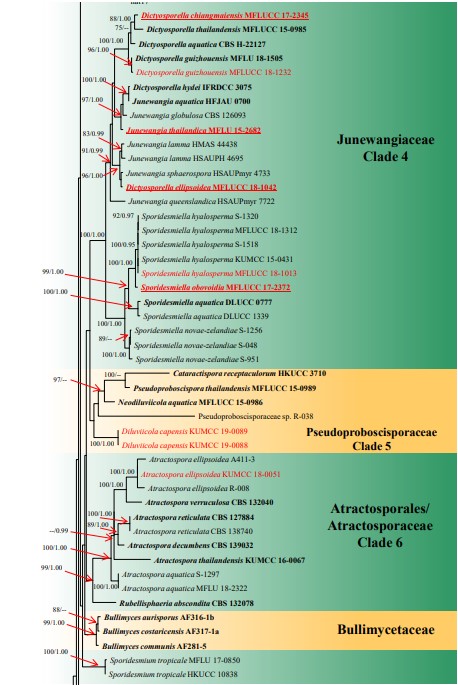
Figure 1 – Continued.
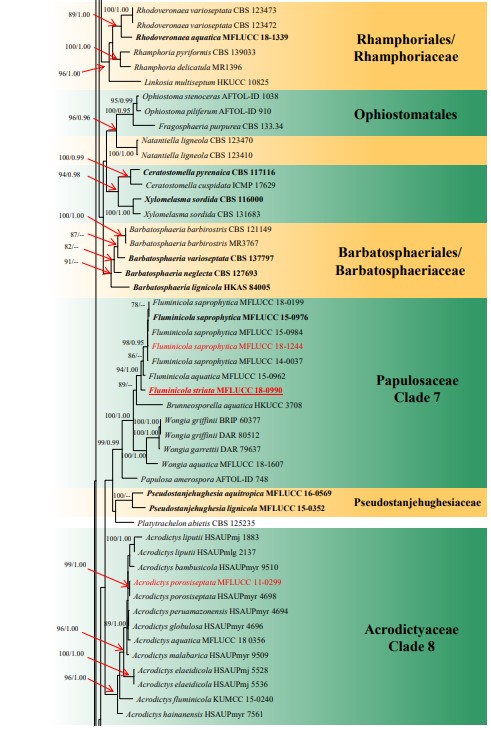
Figure 1 – Continued.
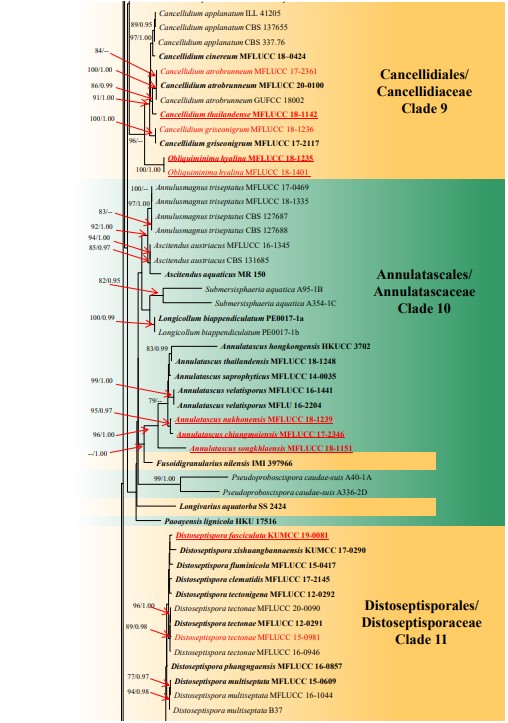
Figure 1 – Continued.
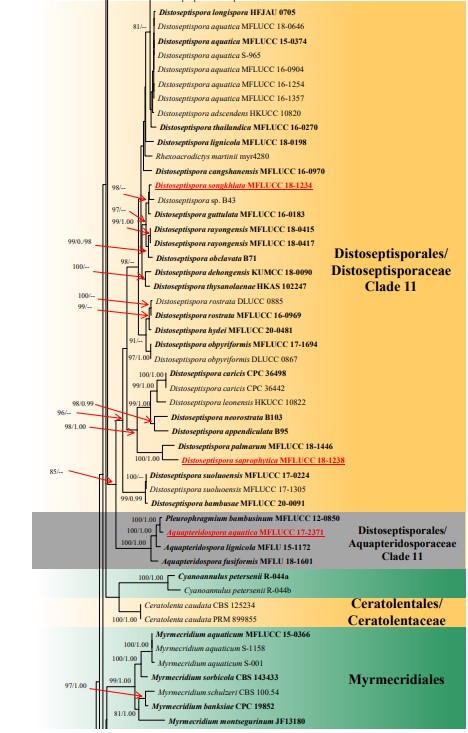
Figure 1 – Continued.
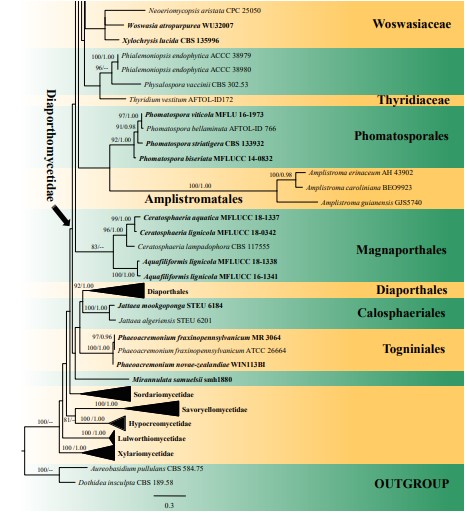
Figure 1 – Continued.
Species
